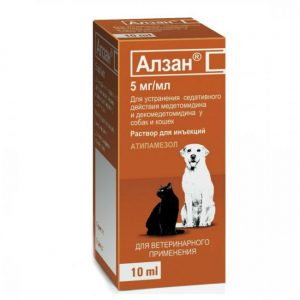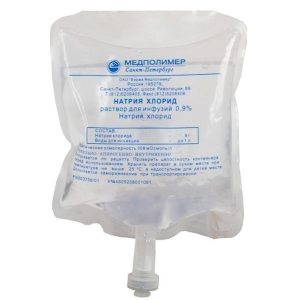Description
Packing
Per pack 10 pcs.
Pharmacological action
OptiMARK is a contrast agent, the paramagnetic properties of which determine the contrast enhancement when performing magnetic resonance imaging (MRI).
Introduction of OptiMARC causes signal amplification in areas of impaired blood-brain barrier function due to the pathological process or intracranial or spinal formations, as well as in areas of focal liver lesions with abnormal vascularization, which provides greater informational content compared to MRI without contrast enhancement.
Indications of
for increasing contrast during MRI in patients with BBB or pathological vascularization of the brain, spinal cord and associated tissues,
for increasing contrast during MRI to visualize foci of pathological vascularization in the liver in patients with suspected structural disorders liver detected by CT.
Contraindications
chronic, severe kidney disease (GFR <30 ml / min / 1.73 m2), acute kidney disease, hypersensitivity to gadeversetamide, gadolinium, versetamide. Pregnancy and lactation Adequate and well-controlled studies of the safety of gadoversetamide during pregnancy have not been conducted. Application is possible only in cases where the expected benefit to the mother justifies the potential risk. With the introduction of the drug, breastfeeding should be interrupted and resumed 72 hours after the administration of gadversetamide. In experimental studies, it is shown that gadoversetamide crosses the placental barrier, is determined in the tissues of the fetus, in breast milk. Special instructions Gadolinium-based contrast agents increase the risk of developing systemic nephrogenic fibrosis in patients with impaired drug excretion. The use of gadoversetamide in this category of patients should be avoided, except when magnetic resonance imaging using other contrast media is not available. The risk of developing systemic nephrogenic fibrosis when using contrast agents based on gadolinium is increased in patients with chronic severe kidney disease with a glomerular filtration rate (GFR) of less than 30 ml / min / 1.73 m2, as well as in patients with acute kidney disease. In such cases, gadversetamide should not be used. In patients with chronic moderate diseases of the kidney with GFR of 30-59 ml / min / 1.73 m2), this risk is lower and even less in patients with mild kidney disease with (GFR of 60-89 ml / min / 1.73 m2). Systemic nephrotic fibrosis can lead to fatal or destructive fibrosis, which affects the skin, muscles, and internal organs. The drug should not be used in patients with acute kidney damage and other conditions that may lead to impaired renal function. The risk of acute kidney damage is possible with surgical interventions, severe infections, toxic kidney damage, including caused by drugs with nephrotoxicity. In patients at risk of chronic kidney disease (including those over the age of 60 years, with diabetes mellitus, chronic arterial hypertension), GFR should be determined before administration of gadoversetamide. Factors for increasing the risk of developing systemic nephrogenic fibrosis are repeated administration of a contrast agent, administration in doses higher than recommended, the degree of impaired renal function, and exposure time. The safety of gadoversetamide in patients with sickle cell anemia has not been studied. The potential risk of hemolysis after administration of gadoversetamide to patients with other types of hemolytic anemia has not been investigated. Patients with a history of allergies, renal failure, or hypersensitivity reactions to the administration of drugs require observation for several hours after the administration of gadeversetamide. Since gadoversetamide is excreted by glomerular filtration, caution is required when administering the drug to patients with impaired renal function (GFR 30 and <90 ml / min / 1.73 m2). The dosage regimen for patients with impaired renal function has not been established. Gadoversetamide is excreted during dialysis. The possibility of developing hypersensitivity reactions, including serious, life-threatening, fatal anaphylactoid or cardiovascular reactions, especially in patients with clinical symptoms of hypersensitivity, should always be considered. an indication of a history of bronchial asthma and other respiratory diseases. The safety of gadoversetamide administration in repeated studies has not been studied. Magnetic resonance imaging is carried out under the supervision of a doctor who has sufficient experience and knowledge about this procedure, under conditions that can provide emergency treatment for the development of complications and severe reactions to the administration of a contrast medium. Safety and efficacy of gadeversetamide when used in pediatrics have not been established. The risk of adverse reactions in children may be increased due to immaturity of the kidneys and / or latent renal failure. Composition Active ingredient: gadeversetamide Dosage and administration Intravenously as a bolus at a dose of 0.2 ml / kg (0.1 mmol / kg) at a rate of 1-2 ml / sec. The imaging procedure should be completed within 1 h after administration of Side effects of the From the nervous system: often – headache, dizziness, paresthesia less than 1% – agitation, anxiety, impaired consciousness, depersonalization, diplopia, dystonia, hallucinations, hyperesthesia, nervousness, drowsiness, tremor, vertigo. From the cardiovascular system: often – vasodilation less than 1% – arrhythmia, chest pain, arterial hypertension, arterial hypotension, palpitation, syncope, tachycardia, vasospasm, pallor From the digestive system: often – nausea, pain in abdomen less than 1% – anorexia, increased appetite, constipation, dry mouth, dysphagia, belching, flatulence, increased salivation, thirst, vomiting On the part of the body as a whole: often – asthenia less than 1% – allergic reactions, swelling of the face, fever, flu-like syndrome, malaise, irritation of the mucous membranes, neck stiffness, neck pain, pelvic pain, increased sweating. From the hemopoietic system: less than 1% – thrombocytopenia. From the side of metabolism: less than 1% – increase in serum creatinine, edema, hypercalcemia, hyperglycemia, hypoglycemia, hyponatremia. From the musculoskeletal system: often – back pain less than 1% – arthralgia, leg cramps, myalgia, myasthenia gravis, muscle spasm. From the respiratory system: less than 1% – asthma, cough, shortness of breath, nosebleeds, hemoptysis, laryngospasm, pharyngitis, sinusitis, hoarseness. Dermatological reactions: less than 1% – erythema multiforme, pruritus, maculopapular rash, vesicular rash, dry skin, urticaria. From the sensory organs: less than 1% – amblyopia, conjunctivitis, hyperacusis, impaired smell, tinnitus. From the urinary system: less than 1% – dysuria, oliguria, frequent urination. Local reactions: less than 1% – reactions at the injection site, incl. edema, thrombophlebitis, inflammation. Storage conditions In the dark place at a temperature of 15-30 ° C. (do not freeze) The Expiration of is 3 years. Deystvuyuschee substances Hadoversetamyd Holiday conditions out pharmacies Prescription Form of Treatment simply entails dlya infusing




